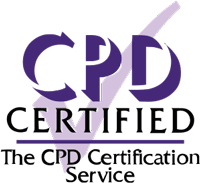QuickBooks Online
QuickBooks Online
Skills you’ll gain
Become more efficient in your bookkeeping process by learning the best-known accounting software for small to medium-sized businesses.
With this QuickBooks Online course, you can boost your accounting capabilities by learning, in a simplified way, how to use this robust software. You’ll start with the basics and then be led towards understanding the tools and features that can help you solve your accounting challenges.
All 40 lessons in this QuickBooks Online course are designed to build your confidence as a QuickBooks user so that you can apply that knowledge in your business or job to increase accounting efficiency.
In this QuickBooks training, you’ll learn how to:
- Locate, drill down into, and modify reports
- Add vendor and customer information
- Record expenses
- Record income in different ways
- Create sales receipts and invoices
- Deposit combined payments
- Set up banking
- Troubleshoot common errors
- And more!
Improve your bookkeeping skills by learning QuickBooks. Get started doing your QuickBooks training online now with our QuickBooks Online course.
Syllabus
Download syllabus-
1
Navigating the chart of accounts Learn how to locate the Chart of Accounts in QuickBooks Online, edit account details, understand the default sort order, change the sorting, and interpret the arrow icons. 4m
-
2
Adjusting the chart of accounts How to add, edit, merge and inactivate accounts within the chart of accounts. 4m
-
3
Reporting on accounts Generate account specific reports and in the case of balance sheet accounts, view registers. 4m
-
1
Introduction to the products and services list Locating, understanding what it is used for and various views for this list. 3m
-
2
Adding, inactivating, editing and merging How to add, edit, merge and inactivate accounts within the products and services list. 3m
-
3
Reporting on products and services How to generate sales reports for products and services. 4m
-
1
Profit and loss introduction How to locate the profit and loss report and lightly review what is seen here. 2m
-
2
Profit and loss modification How to drill down into the detail behind the profit and loss, various ways to modify the report. 4m
-
3
Balance Sheet introduction How to locate the balance sheet report, and lightly review what is seen here. 3m
-
4
Balance Sheet modification How to drill down into the detail behind the balance sheet, various ways to modify the report. 3m
-
5
Accounts Receivable and Accounts Payable How to locate the various accounts receivable and payable reports and the benefits of each 4m
-
1
Connecting the bank Connecting the bank to QBO for a one-way sync into QBO. 3m
-
2
Bank transactions dashboard Explore the bank transactions dashboard and the information shown. 5m
-
3
Reconciliation Demonstration of how and why to reconcile accounts with a balance and a statement (such as checking, savings, credit card). 5m
-
1
Sales Dashboard Discuss the various tabs located within the sales section of QBO. 4m
-
2
Adding a customer How to add a customer to QuickBooks 4m
-
3
Determining which method to use when recording income Income can be recorded into QuickBooks using three methods -- directly to the income account, using a sales receipt, and invoices. This lesson will focus on the differences between each allowing the user to determine which method is appropriate for them. 3m
-
4
Posting directly to an income account How to post directly to an income account 4m
-
5
Using sales receipts How to create a sales receipt 4m
-
6
Using invoices How to create an invoice and apply the customer payment to the invoice 3m
-
7
Combined payments Why and how to combine multiple payments into a single deposit 4m
-
1
Expenses Dashboard Discuss what can be found in the expense tab 4m
-
2
Vendors and contractors Locating and adding vendors and contractors to QBO. 4m
-
3
Manually entering expenses How to record expenses, checks written by hand and printing checks. 4m
-
4
Entering downloaded expenses How to record expenses downloaded from the bank. 4m
-
5
Expenses vs Bills Explain the difference between expenses, bills and the related workflow. 3m
-
1
Bank register Identify errors on the bank register such as uncleared transactions 4m
-
2
Profit and Loss report Discuss common mistakes found on the profit and loss report and how to correct them. 5m
-
3
Balance sheet report Discuss common mistakes found on the balance sheet report and how to correct them. 4m
-
4
Accounts Receivable Errors Discuss common mistakes found on the accounts receivable report 3m
-
5
Accounts Payable Errors Discuss common mistakes found on the accounts payable report 2m
Certificate
Certificate of Completion
Awarded upon successful completion of the course.

Instructor
Rachel Barnett
Rachel Barnett has been a QuickBooks user since 1995, eventually earning QuickBooks ProAdvisor status. Rachel owned and operated Primarily Bookkeeping, d/b/a Your Bookkeeping Fairy Godmother, a Seattle-area bookkeeping firm, for six years, until selling the firm in 2018.
Following the sale of her business, Rachel embraced her passion to provide behind-the-scenes support for other professionals. She started Gentle Frog to support businesses that employed an in-house bookkeeper or owners who chose the DIY route.

Rachel Barnett
QuickBooks ProAdvisor
Accreditations
Link to awardsHow GoSkills helped Chris
I got the promotion largely because of the skills I could develop, thanks to the GoSkills courses I took. I set aside at least 30 minutes daily to invest in myself and my professional growth. Seeing how much this has helped me become a more efficient employee is a big motivation.


